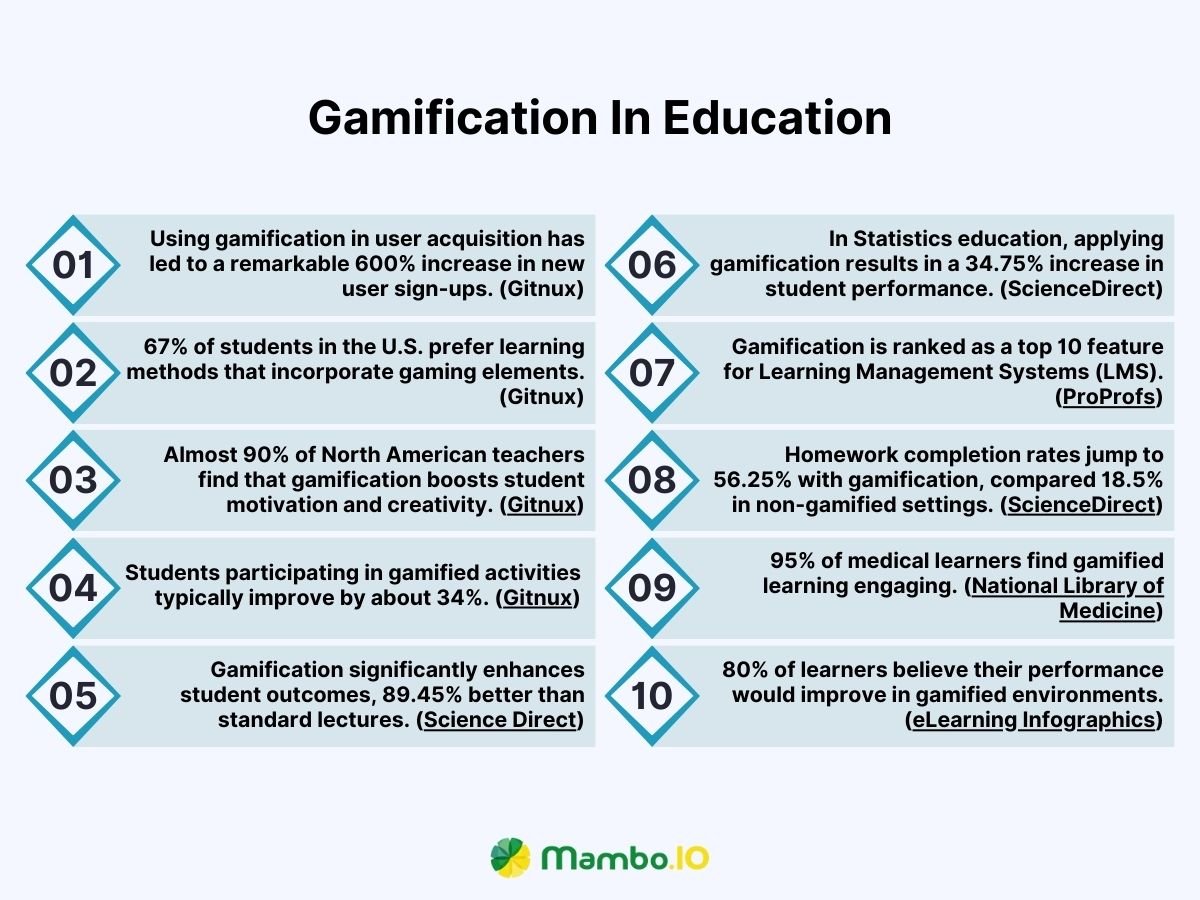Buzz of Connections
Exploring the latest trends in dating, relationships, and social interactions.
Gamify Your Way to Users: Turning Engagement into Growth
Unlock the secret to explosive growth! Discover how gamification transforms user engagement into loyal customers. Read more!
10 Game Mechanics to Boost User Engagement on Your Platform
Implementing effective game mechanics can significantly enhance user engagement on your platform. One of the most popular mechanics is the use of reward systems. By offering incentives such as points, badges, or virtual currencies, you can motivate users to participate more actively. Progress tracking is another crucial mechanic; allowing users to see their accomplishments not only fosters a sense of achievement but also encourages continued interaction. Additionally, introducing challenges and quests can create a more immersive experience, making users feel like they are part of a larger narrative.
Another effective way to boost engagement is through social interaction. Implementing features that allow users to collaborate or compete with friends can make the experience more enjoyable and encourage users to return. Customizable avatars also add a personal touch, as users enjoy expressing themselves through their on-screen personas. Don't forget about providing regular updates and new content; fresh game mechanics or seasonal events keep the interest alive and can even draw in lapsed users. Lastly, utilizing surveys and feedback mechanisms to understand user preferences will allow you to continually refine and optimize the experience, ensuring long-term engagement.

Counter-Strike is a highly popular first-person shooter game that pits teams of terrorists against counter-terrorists in various objective-based scenarios. Players engage in intense matches where strategy and teamwork are crucial to achieve victory. For those looking to enhance their gaming experience, utilizing a winz.io promo code can unlock various benefits.
How Gamification Transforms User Experience: A Deep Dive
Gamification is revolutionizing the way users interact with digital platforms by integrating game-like elements into non-game contexts. By incorporating features such as points, badges, and leaderboards, brands can enhance user engagement and satisfaction. For instance, many e-learning platforms now utilize gamification techniques to make the learning process more enjoyable and motivational. This transformation fosters a sense of achievement and encourages users to invest more time in activities that promote skill development and knowledge acquisition.
Moreover, the impact of gamification extends beyond mere engagement. It also enhances the overall user experience by creating a more immersive environment. Users are not just passive recipients; instead, they become active participants in their journey. This interactivity can lead to higher retention rates, increased loyalty, and ultimately, improved brand perception. As companies continue to adopt gamification strategies, understanding its core principles will be crucial in crafting experiences that resonate with users and drive long-term success.
Are You Ready to Gamify? Key Questions to Consider for User Growth
As you consider whether to gamify your platform, start by asking yourself some pivotal questions that align with your user growth strategy. What specific behaviors do you want to encourage among your users? Identifying these behaviors is crucial, as it will help you design a gamification system that not only engages users but also drives measurable actions. Furthermore, think about your target audience: Are they motivated by competition, collaboration, or personal achievement? Understanding their preferences will inform how you structure your gamification elements, whether they be leaderboards, challenges, or rewards.
Once you've outlined your goals, evaluate the resources at your disposal for implementing gamification. Do you have the technical abilities needed to integrate game-like elements seamlessly into your existing platform? It's also vital to consider the long-term sustainability of your gamification strategy. Are the systems you put in place built to evolve with user feedback and changing market trends? In essence, leveraging gamification for user growth requires not only a foundational understanding of your users' motivations but also a commitment to continually refine and adapt your approach as your audience grows.